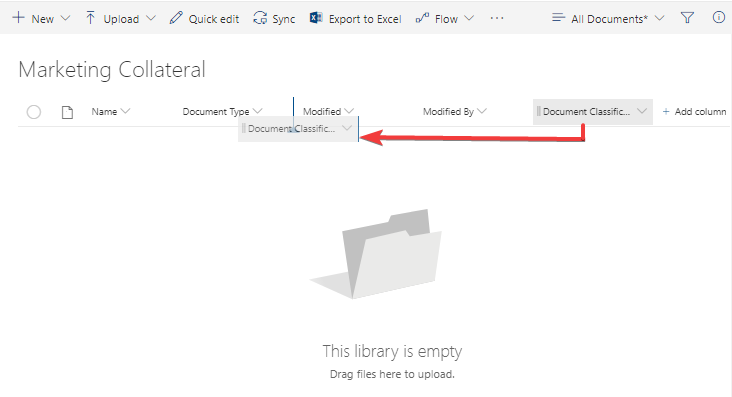A library is a secure place in SharePoint where you can upload, create, and manage files for online sharing and collaboration with your team. Just like lists, each library comes with key built-in columns that store information about each file, such as who created the file and when, and who last modified it and when. You can always add to the columns in a library, just as you would do for a list. Almost all site types ship with a default library so that you can store the documents within that site. Libraries can be of different types. A Document library is the most commonly used library and, as the name suggests, it is used to store, manage, and share documents.
For this recipe, we will create a document library from scratch. We will use this library to store marketing documents. This library will enable you to classify each document using the Document Typeand Document Classification columns.
Getting ready
You will need either an Edit,Design, orFull Control permission on the site where you'd like to create the library.
How to do it...
To create a new document library in your site, follow these steps:
- Browse to the Site contents page.
- Click the New menu and then the Document library option under that menu.
- Provide a name and description for the library so that others can identify the nature of the information that it stores. We are going to use Marketing Collateral as the library name and This library contains collateral for use of the Marketing team as its Description.
- We will leave the Show in site navigation box checked. This will result in the library being shown on the left-hand side navigation menu for the site.
- We will then click the Create button to create the new document library.
- This will create the new library and redirect us to it in the browser.
- You will notice that the library already has the following columns created for us: Name, Modified, and Modified By. We can now add the remaining columns to our library.
- To add the Document Type column, click on the Add columnoption and select Choice as the column type. Then, enter Document Type as the column name. Enter Campaign, Case Study, Product Overview, and Product Pitchin four separate lines in the Choices field. Then, set Require that this column contains information to Yes and click the Save button, as shown in the following screenshot:

- To add the DocumentClassification column, click the Add column option and select Choice as the column type. Then, enter Document Classification as the column name. Enter Confidential, Restricted, Internal use, and Publicin four separate lines in theChoices field. Then, slide Require that this column contains information toYes and click theSave button.
- We will also change the position of the two newly created columns so that they show up next to the Name column (before the Modified and Modified By columns). To do so, simply click on the Document Type column name and drag it left, before the Modified column. Do the same for the Document Classification column, as shown in the following screenshot:

That's it – congratulations! You just created and configured your first SharePoint document library.
How it works...
A document library is a type of list that is centered around documents. Just like a list, it lets you add, edit, view, and delete documents and metadata related to those documents. One of the most popular capabilities that a document library enables is the ability for multiple users to concurrently work on the same document. Users can not only concurrently edit documents but can also view each other's edits in real-time. SharePoint also lets you create complex approval workflows on these documents. Similar to regular lists, you can set email alerts for when documents in a library are added, updated, or deleted.
Just like lists, SharePoint provides a set of pre-built libraries. Some notable examples of such libraries include the Picture Library, Form Library, and Site PagesLibrary.



